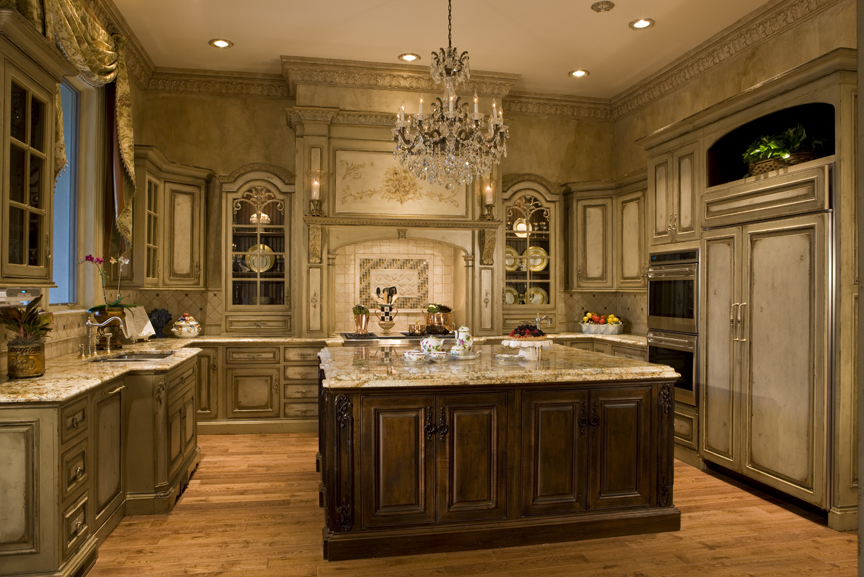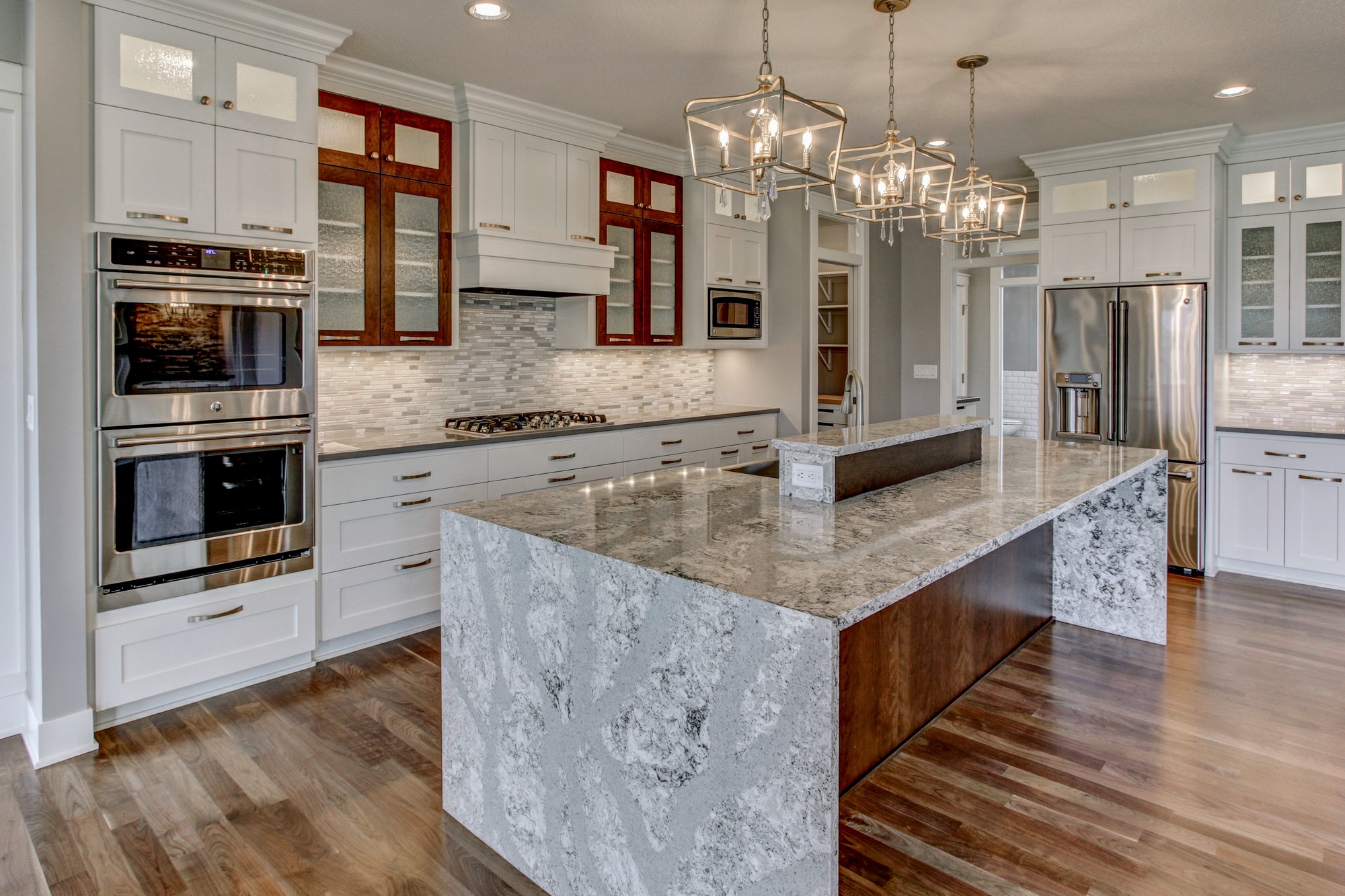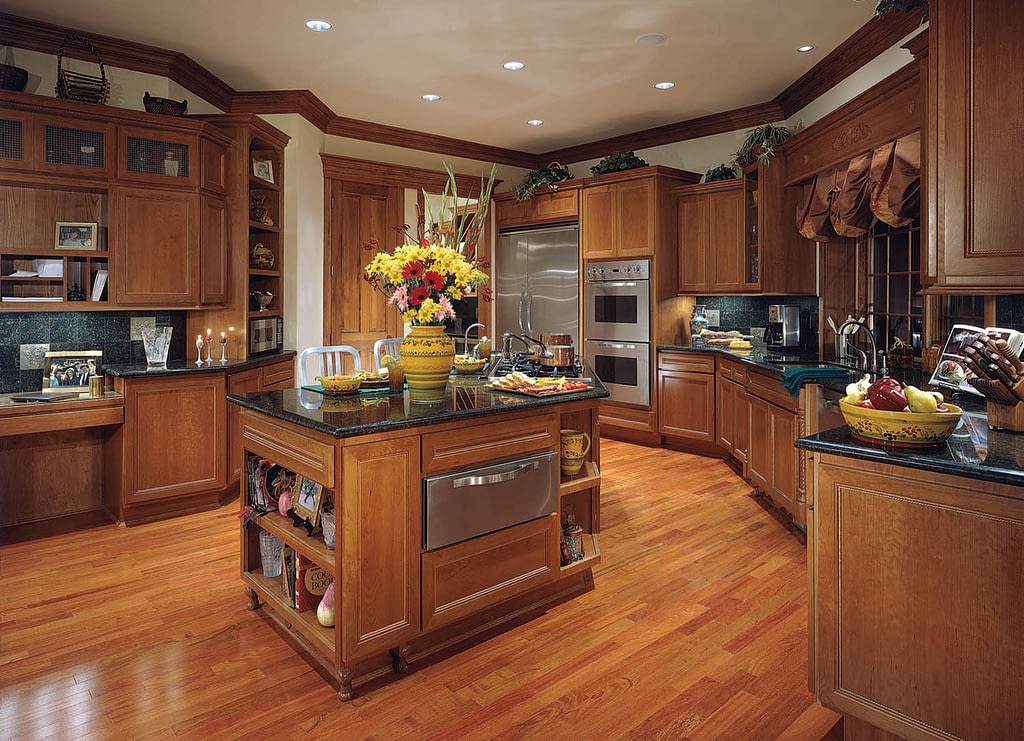The Appeal of Custom Kitchen Cabinets

When it comes to kitchen design, custom cabinets offer a distinct advantage over pre-made options. They provide a level of personalization and functionality that can transform your kitchen into a truly unique and efficient space.
The Benefits of Custom Kitchen Cabinets
Custom cabinets are crafted to perfectly fit your kitchen’s dimensions and your specific needs. This eliminates the need to compromise on size or functionality, ensuring a seamless integration with your existing layout.
- Space Optimization: Custom cabinets are designed to maximize every inch of available space, making them ideal for smaller kitchens or kitchens with awkward layouts. You can incorporate unique features like pull-out shelves, corner cabinets, and built-in appliances to create a highly efficient and functional workspace.
- Enhanced Functionality: Custom cabinets can be tailored to your specific storage needs. You can request specific features like spice racks, utensil drawers, and dedicated storage for large appliances or cookware. This allows you to organize your kitchen in a way that makes sense for your lifestyle and cooking habits.
- Durability and Longevity: Custom cabinets are typically constructed from high-quality materials and built to last. You can choose from a wide range of wood types, finishes, and hardware, ensuring that your cabinets will withstand the test of time and complement your kitchen’s aesthetic for years to come.
- Increased Home Value: Custom cabinets are a significant investment that can increase the value of your home. They add a touch of luxury and sophistication that appeals to potential buyers, making your property more desirable and potentially increasing its resale value.
Aesthetic Advantages of Custom Cabinets
Custom cabinets offer unparalleled aesthetic flexibility, allowing you to create a kitchen that truly reflects your personal style.
- Unique Design: You can choose from a wide range of materials, colors, finishes, and hardware to create a truly unique look that aligns with your kitchen’s overall design theme. You can incorporate intricate details, such as crown molding, decorative hardware, and custom cabinet doors, to add a touch of personality and elegance.
- Seamless Integration: Custom cabinets are designed to perfectly integrate with your existing kitchen design. They can be tailored to match the style of your countertops, backsplash, flooring, and other architectural elements, creating a cohesive and visually appealing space.
- Personalized Features: Custom cabinets allow you to incorporate unique features that enhance the aesthetic appeal of your kitchen. This can include decorative shelves, open shelving, and integrated lighting to create a visually stunning and functional space.
Maximizing Space Utilization and Functionality, Signature custom kitchen cabinets
Custom cabinets can be designed to optimize space utilization and enhance functionality in even the smallest kitchens.
- Vertical Storage: Custom cabinets can be designed to reach the ceiling, maximizing vertical storage space. This is especially beneficial for smaller kitchens, where floor space is limited.
- Corner Solutions: Custom cabinets can effectively utilize awkward corner spaces that are often wasted in pre-made cabinet designs. Corner cabinets with pull-out shelves or lazy susans provide easy access to items stored in these difficult-to-reach areas.
- Built-in Appliances: Custom cabinets can be designed to seamlessly integrate with appliances, such as refrigerators, ovens, and microwaves. This creates a clean and streamlined look while maximizing space efficiency.
Design Considerations for Signature Custom Cabinets: Signature Custom Kitchen Cabinets

Creating signature custom cabinets involves careful consideration of various design elements that contribute to a unique and functional kitchen space. This guide explores different aspects of design, including cabinet styles, materials, finishes, and hardware options, offering valuable insights for crafting bespoke kitchens that reflect individual preferences and lifestyles.
Cabinet Styles
The choice of cabinet style significantly influences the overall aesthetic and functionality of a kitchen. Different styles cater to various design preferences and architectural influences.
- Traditional: Characterized by ornate details, raised panels, and classic hardware. Traditional cabinets often feature a warm and inviting ambiance, suitable for kitchens with a timeless and elegant feel.
- Modern: Emphasizing clean lines, minimalist details, and sleek finishes. Modern cabinets often feature flat panels, integrated hardware, and a focus on functionality.
- Contemporary: Blending modern elements with a touch of traditional design. Contemporary cabinets may feature subtle details, geometric patterns, and a balance between functionality and aesthetics.
- Rustic: Inspired by natural elements, often featuring distressed wood, reclaimed materials, and exposed hardware. Rustic cabinets create a warm and inviting atmosphere, ideal for kitchens with a farmhouse or cottage style.
Materials
The material used for custom cabinets plays a crucial role in durability, aesthetics, and cost. Common materials include:
- Wood: A popular choice for custom cabinets, offering a wide range of species, grains, and finishes. Wood cabinets are known for their durability, warmth, and natural beauty. Popular choices include oak, cherry, maple, and walnut.
- Plywood: A cost-effective and durable option, often used for cabinet boxes and interior components. Plywood offers stability and resistance to warping, making it a practical choice for custom cabinets.
- Medium-density fiberboard (MDF): A versatile and affordable material used for cabinet doors, panels, and drawer fronts. MDF is known for its smooth surface and ability to accept various finishes.
- Thermofoil: A durable and moisture-resistant material that features a plastic laminate applied to a core of MDF or plywood. Thermofoil cabinets offer a smooth, easy-to-clean surface and are available in various colors and patterns.
Finishes
Finishes play a significant role in defining the visual appeal and character of custom cabinets.
- Paint: Offers a wide range of colors and finishes, allowing for customization and the creation of bold or subtle looks. Painted cabinets are relatively easy to maintain and can be refreshed with a new coat of paint when desired.
- Stain: Enhances the natural beauty of wood by penetrating the surface and creating a rich, textured finish. Stains offer a variety of colors and tones, allowing for a more natural and rustic look.
- Lacquer: A durable and glossy finish that provides a protective layer over wood. Lacquer finishes are often used for high-end cabinets and offer a luxurious and elegant appearance.
- Varnish: A clear protective coating that enhances the natural beauty of wood while providing durability and moisture resistance. Varnish finishes are available in various gloss levels, from matte to high-gloss.
Hardware
Cabinet hardware includes handles, knobs, hinges, and other accessories that enhance functionality and aesthetics.
- Handles: Available in a wide variety of styles, materials, and finishes. Handles can be used to open cabinets and drawers and can add a decorative touch to the design.
- Knobs: Similar to handles, knobs provide a convenient way to open cabinets and drawers. Knobs are often smaller than handles and can be made from various materials, including metal, ceramic, and glass.
- Hinges: Used to attach cabinet doors to the cabinet box. Hinges are available in various styles and materials, including concealed hinges that offer a clean and minimalist look.
- Pull-out shelves: Provide easy access to items stored in cabinets. Pull-out shelves are often used in base cabinets and can be customized to fit specific needs.
- Soft-close drawers: Equipped with mechanisms that prevent drawers from slamming shut. Soft-close drawers provide a quiet and controlled closing experience, enhancing convenience and minimizing noise.
Kitchen Layout Featuring Signature Custom Cabinets
A well-designed kitchen layout maximizes functionality and aesthetics. Here’s a sample layout featuring signature custom cabinets:
| Cabinet Type | Features | Description | Placement |
|---|---|---|---|
| Base Cabinets | Drawers, shelves, pull-out shelves, soft-close mechanisms | Provide ample storage space for cookware, utensils, and other kitchen essentials. | Along the perimeter of the kitchen, under countertops. |
| Wall Cabinets | Shelves, glass doors, open shelving | Offer overhead storage for dishes, glassware, and decorative items. | Above countertops, along the perimeter of the kitchen. |
| Island Cabinets | Base cabinets, drawers, open shelving | Create a central focal point in the kitchen, providing additional storage and work space. | In the center of the kitchen, serving as a work surface and gathering spot. |
| Pantry Cabinets | Large storage compartments, adjustable shelves | Provide ample storage for pantry items, canned goods, and other non-perishable food. | Typically located in a designated pantry area or adjacent to the kitchen. |
The Process of Creating Signature Custom Cabinets

The journey from concept to completion for signature custom cabinets involves a collaborative effort between homeowners, kitchen designers, and cabinet makers. It’s a process that requires careful planning, meticulous execution, and a shared vision to create a kitchen that’s both beautiful and functional.
The Design Process
This stage involves translating your dream kitchen into a tangible plan. It’s a collaborative process where you and the kitchen designer work together to define your needs, style preferences, and budget.
- Initial Consultation: The designer will visit your home to understand the existing space, gather your ideas, and discuss your lifestyle and culinary habits. They’ll also take measurements and assess the layout, considering factors like natural light, traffic flow, and existing appliances.
- Design Development: The designer will create a series of floor plans and elevations, showcasing different layout options and cabinet configurations. They’ll incorporate your feedback, adjust the design based on your preferences, and present 3D renderings to visualize the final look and feel.
- Material Selection: Once the design is finalized, you’ll choose the materials, finishes, and hardware for your cabinets. This involves selecting wood species, cabinet doors, drawer fronts, countertop materials, and hardware details. The designer will provide guidance on material options, considering factors like durability, style, and budget.
The Planning Process
After the design is finalized, the planning phase involves translating the design into detailed specifications for the cabinet maker. This phase requires meticulous attention to detail, ensuring all aspects of the design are accurately communicated.
- Cabinet Drawings: The designer will create detailed cabinet drawings, including dimensions, specifications, and material details. These drawings serve as blueprints for the cabinet maker, providing a clear understanding of the design and construction requirements.
- Material Procurement: The cabinet maker will source the necessary materials based on the design specifications. This includes ordering wood, hardware, and other components needed for cabinet construction.
- Construction Schedule: The cabinet maker will create a construction schedule, outlining the timeline for each stage of the process, from material preparation to final installation. This ensures a smooth and efficient workflow, minimizing delays and ensuring timely completion.
The Installation Process
The final stage involves assembling and installing the custom cabinets in your kitchen. This requires skilled craftsmanship and careful coordination to ensure a seamless integration with the existing space.
- Cabinet Assembly: The cabinet maker will assemble the cabinets in their workshop, ensuring precise measurements and quality craftsmanship. They’ll use specialized tools and techniques to create sturdy and durable cabinets.
- On-Site Installation: Once the cabinets are assembled, they’ll be delivered to your home for installation. The cabinet maker will carefully install the cabinets, ensuring proper alignment, leveling, and secure attachment to the walls and floors.
- Final Touches: The final installation process includes installing hardware, countertops, and backsplashes. This involves coordinating with other tradespeople, such as countertop installers and electricians, to ensure a smooth and integrated finish.
Signature custom kitchen cabinets are a beautiful way to elevate your home’s aesthetic, but don’t forget about the practicalities of storage. If you’re looking for a solution for your outdoor space, you might want to check out the suncast base storage cabinet instructions to keep your tools and equipment organized.
Just like your custom kitchen cabinets, these storage solutions can help you maximize space and efficiency.
Signature custom kitchen cabinets are all about maximizing space and functionality. You might not think of a 16 drawer small parts storage cabinet as a kitchen essential, but it can be a game-changer for organizing your utensils, spices, and other small items, freeing up valuable drawer space in your custom cabinetry for larger items.